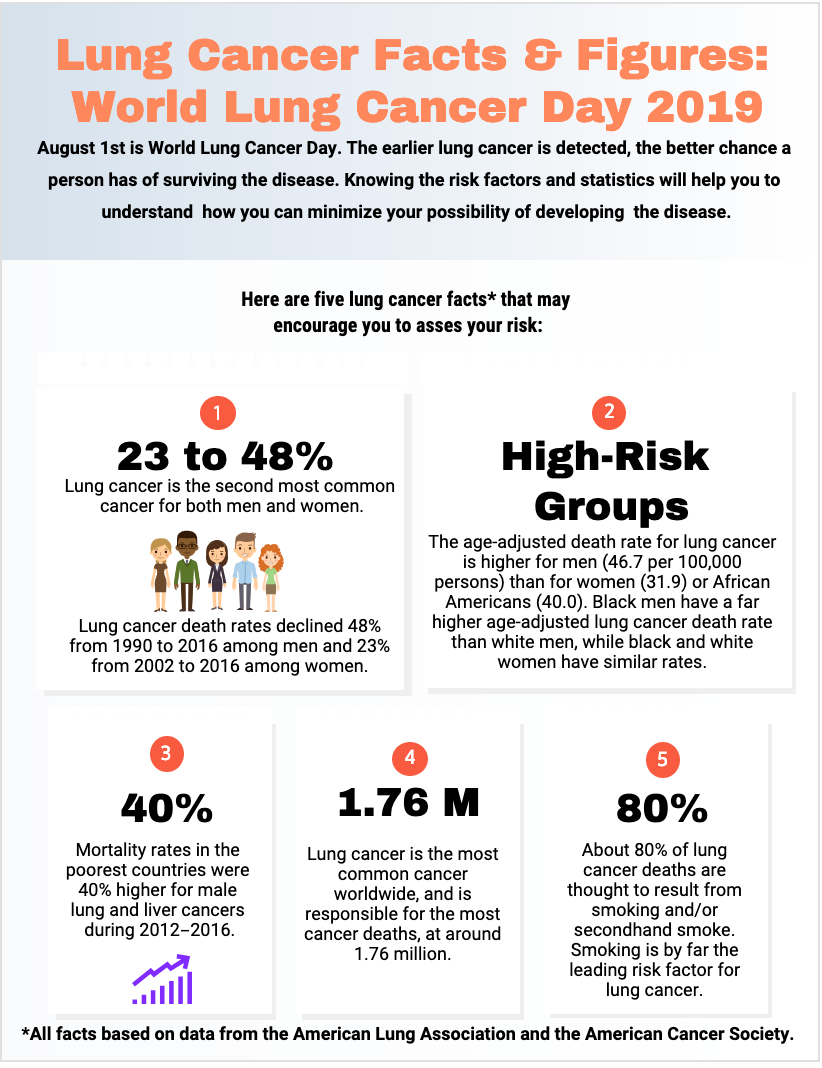Article
World Lung Cancer Day 2019: Facts & Figures
Author(s):
The earlier lung cancer is detected, the better chance a person has of surviving the disease. Knowing the risk factors and statistics will help you to understand how you can minimize your possibility of developing the disease.
In conjunction with World Lung Cancer Day — recognized on Aug. 1 – CURE has highlighted a variety of facts that can help patients assess risk for the disease.

Prognosis
The earlier lung cancer is detected, the better chance a person has of surviving the disease. Knowing the risk factors and statistics will help you to understand how you can minimize your possibility of developing the disease.
Occurrence
Lung cancer is the second most common cancer for both men and women in the United States, according to statistics reported by the American Lung Association (ALA). However, worldwide, lung cancer is the most common cancer, with approximately 2.09 million new diagnoses each year, and is responsible for the most cancer deaths, at around 1.76 million, according to the World Health Organization.
Tobacco Use
Tobacco is the leading risk factor for developing lung cancer, accounting for approximately 80% of lung cancer deaths. “While smoking tobacco is the leading risk factor for lung cancer, it is not the only one,” advised Cancer Health. “A family history of lung cancer and exposure to certain carcinogens also increase the likelihood of developing the disease.”
Risk Factors
Some of the other risk factors are out of our control, such as race and/or gender. Women and black people worldwide are subject to a higher rate of mortality from lung cancer. “While the age-adjusted death rate for lung cancer is higher for men (46.7 per 100,000 persons) than for women (31.9 per 100,000 persons),” according to the ALA, “it is similar for blacks (40.0 per 100,000 persons) and whites (39.2 per 100,000 persons) overall. However, black men have a far higher age-adjusted lung cancer death rate as compared to white men, while black and white women have similar rates.” This could be due to disparities in access to care, as mortality rates in the poorest counties were found to be 40% higher for male lung and liver cancers during 2012 to 2016.
Death Rates
Lung cancer death rates declined 48% from 1990 to 2016 among men and 23% from 2002 to 2016 among women. The mortality rates among women are only projected to increase. In a 2018 study published in Cancer Research, researchers found that lung cancer mortality rates among women are projected to increase by 43 percent from 2015 to 2030.




